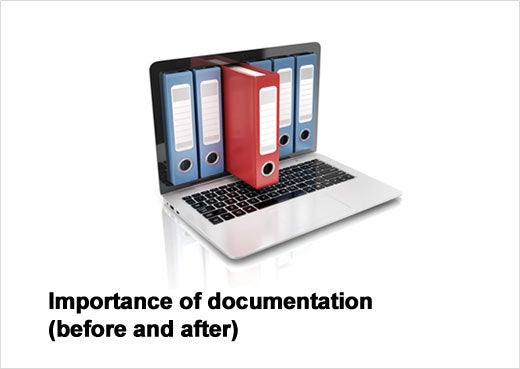There are countless horror stories of seemingly straightforward $5 million software projects turning into $200 million process disruptions. When projects are stymied and development teams check out, the act of bridging the gap between the initial team’s exit and the arrival of the new development team can be complicated.
When starting out with a development project, there are optimistic goals and friendly introductions. But as tickets begin to pile up and communication breakdown sets in, there is a certain undeniable point where companies must part ways with their hired software development team.
To help alleviate the stress of switching teams, Icreon Tech compiled a list of the most important factors that play into a successful transition. By paying attention to documentation, contract formation, third-party relationship, collaboration tools and takeover expectations, businesses can alleviate the pain and loss of resources associated with changing development teams in the middle of a project.
Click through for five tips to help businesses alleviate the pain and loss of resources associated with changing development teams in the middle of a project, as identified by Icreon Tech.
There are countless horror stories of seemingly straight forward $5 million software projects turning into $200 million process disruptions. When projects stymie and development teams check out, the act of bridging the gap between the initial team’s exit and the arrival of the new development team can be complicated.
When starting out with a development project, there are optimistic goals and friendly introductions. But as tickets begin to pile up and communication breakdown sets in, there is a certain undeniable point where companies must part ways with their hired software development team.
To help alleviate the stress of switching teams, Icreon Tech compiled a list of the most important factors that play into a successful transition. By paying attention to documentation, contract formation, third-party relationship, collaboration tools and takeover expectations, businesses can alleviate the pain and loss of resources associated with changing development teams in the middle of a project.
Importance of documentation (before and after)
Without adequate documentation, the process of changing development teams during a project grows increasingly complex.
By maintaining accurate documentation leading up to the change, it is that much easier for the new team members to acclimate to the project. Documentation should be central upfront and it must evolve as the project reaches specified benchmarks.
Thorough documentation provides the incoming team with a concise and clear roadmap for what has occurred and what was currently being implemented. If it appears that a relationship with a development partner is going downhill, an effective move would be to have the team focus on creating handover documentation for the incoming team.
As the new team familiarizes themselves with the business and project specifics, companies should also allow time for on-boarding and preparation.
Start with the contract; do you own the code?
Clear and precise designation of who owns the code base for a software project is possibly one of the most crucial areas a company should attend to. If you don’t own the code, transitioning to a new development team can be a nightmare.
Contractual aspects such as a ‘termination cause’ and specified ownership of the code base can make the transition between development teams much less painful. A termination clause will specifically detail how documentation and code must be handed over to the client.
Coordinating directly with third parties
As companies break away from a development team, one of the major areas to not overlook is the relationship with third-party service providers.
On countless website and software development projects, third-party companies are brought in to provide services outside of the team’s expertise. These can include: payment gateways, hosting, live chat, or PayPal shopping carts.
Coordinating directly with third parties, continued
To avoid any issues associated with parting ways with the development team, companies should establish strong relations with the third parties. Specifically when it comes to hosting services, where the code base is stored directly on their servers, companies must hold the reins.
A worst-case scenario would be parting ways with the development company who maintained the only direct relation with the third party. In such cases, they essentially hold the keys to the car, and can make moving away from that team nearly impossible.
From the outset of a project, companies should designate a ‘technical contact’ inside the organization, to manage and maintain relations with third parties.
Setting expectations for a team transition
There is no denying that takeovers are often messy. On-boarding time after identifying an adequate replacement team is critical to a seamless transition.
Allowing an initial time period for teams to familiarize themselves with a project, and to discover what went wrong, can help smooth the process. Allowing time for the new software team to understand the inherent problems that led to the split will increase the likelihood of solving those issues going forward.
Setting expectations for a team transition, continued
One of the most important steps a company can make to ensure that transition is to define a service level agreement (SLA) to effectively delegate issues, responsibilities and expectations for work. This allows for clear designation on how to escalate and solve issues.
With set specifications for how many missed milestones and errors occur, it is easier to identify when to fire a development team. Those same specifications can then be applied to the incoming team.









